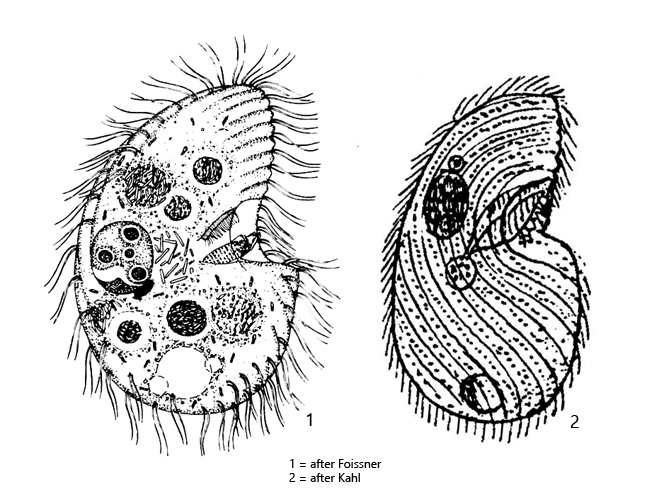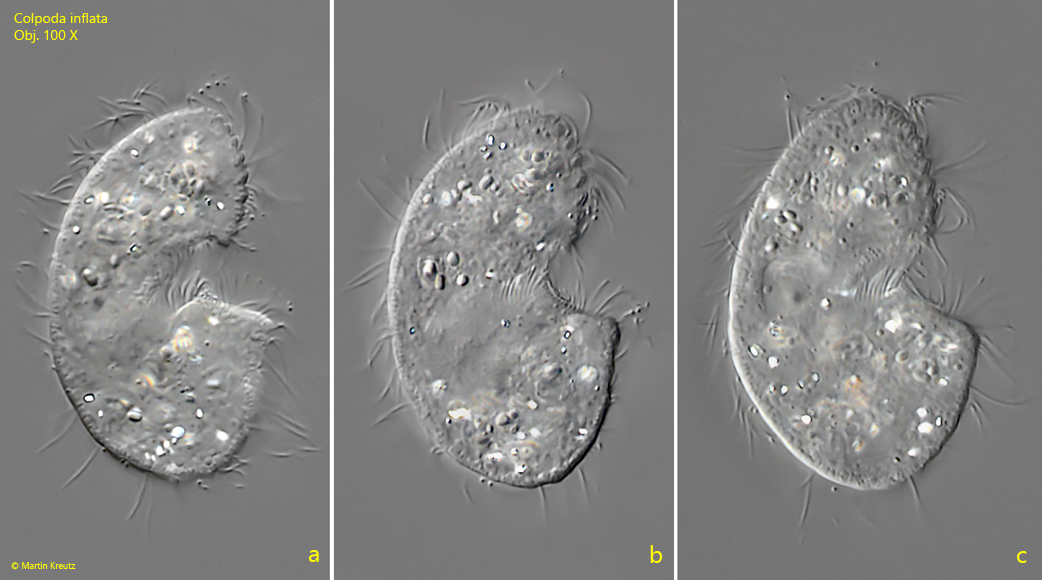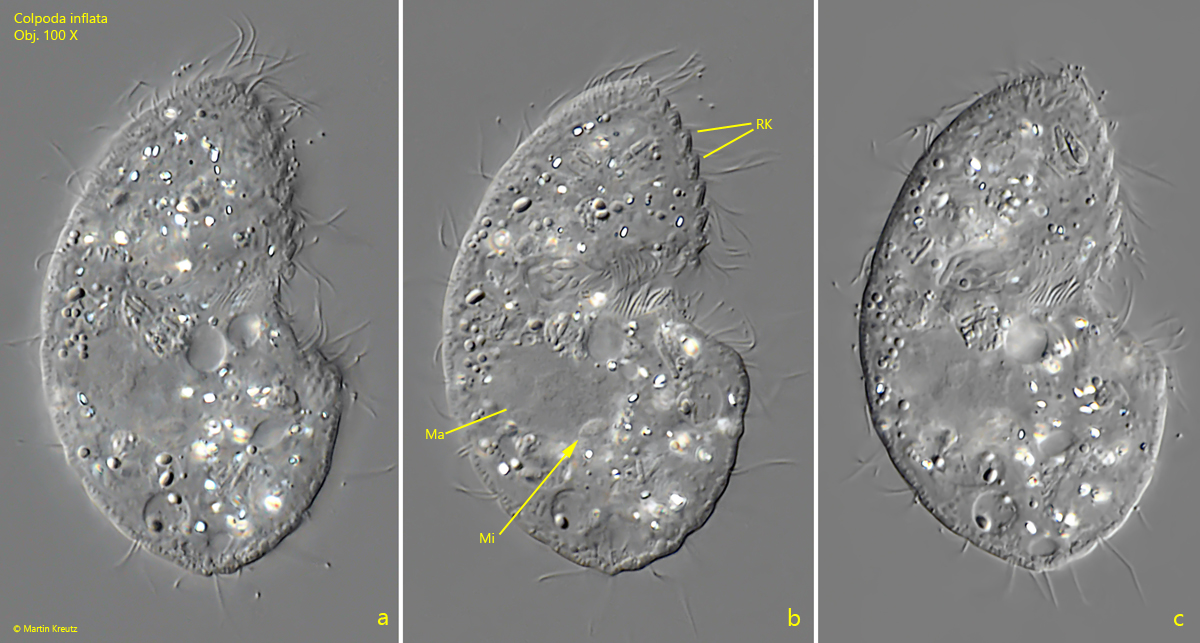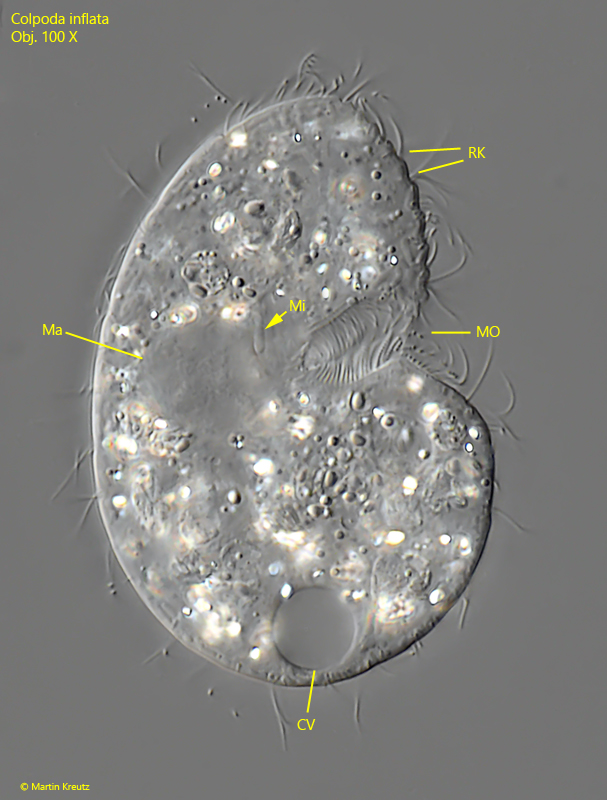Colpoda inflata
(Stokes, 1884) Kahl, 1931
Most likely ID: n.a.
Synonym: n.a.
Sampling location: Moss
Phylogenetic tree: Colpoda inflata
Diagnosis:
- body L-shaped, posterior half is projected ventrally in relation to the anterior half
- keel straight with 6–8 ribs
- length 35–90 µm, usually 40–60 µm
- mouth opening in “corner” of the angle
- macronucleus broadly ellipsoid or globular
- micronucleus ellipsoid, flattened
- mouth opening with a right and left field of polykineties
- cilia of the left polykinetid are long, forming a “beard”
- extrusomes inconspicuous, about 1.2 µm long
- somatic ciliation of 17–29 rows of paired cilia
- contractile vacuole terminal
- no caudal cilia

So far I have found Colpoda inflata only in moss samples. I pour rainwater over the collected moss cushions from trees, walls or roofs in Petri dishes. In some of these moss samples I found Colpoda inflata after some days, often associated with Colpoda cucullus and Colpoda lucida.
Colpoda inflata can be easily recognized by its typical L-shape. This is caused by the posterior half of the body, which protrudes clearly ventrally compared to the anterior half of the body. The mouth opening is located at an angle between the anterior and posterior half of the body and is equipped with two fields of closely spaced cilia (polykinetids). In my population the macronucleus was always globular and the micronucleus clearly flattened, almost disc-shaped (s. figs. 2 b and 3). A fringe of extrusomes is present, but it is very inconspicuous because the extrusomes are only 1.0-1.2 µm long and not densely arranged. The keel in the specimens of my population was straight and showed 8–9 distinct ribs (s. figs. 2 b and 3), which corresponds exactly to the description by Foissner (1993).

Fig. 1 a-c: Colpoda inflata. L = 40 µm. Different focal planes of a freely swimming specimen from right. Note the L-shape of the body with the with the posterior half protruding ventrally. Obj. 100 X.

Fig. 2 a-c: Colpoda inflata. L = 52 µm. A second, freely swimming specimen from right. Ma = macronucleus, Mi = micronucleus, RK = ribbed keel. Obj. 100 X.

Fig. 3: Colpoda inflata. L = 61 µm. A slightly squashed specimen from right. The macronucleus (Ma) is located in mid-body with the adjacent, flattened micronucleus (Mi). CV = contractile vacuole, MO = mouth opening, RK = ribbed keel. Obj. 100 X.